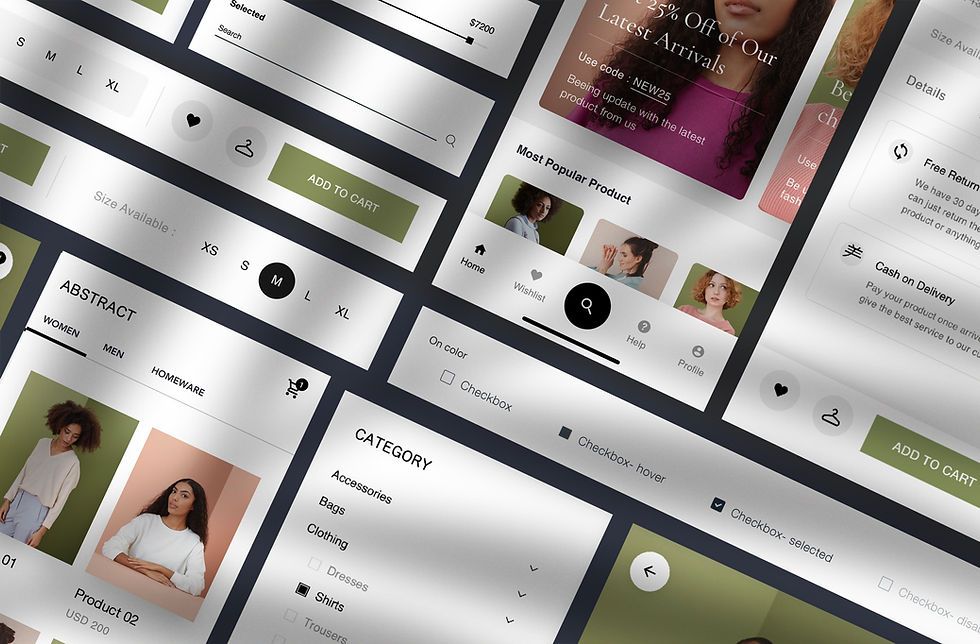What is the best choice for your e-commerce strategy?
- @commsanalyst

- Jan 30, 2020
- 3 min read
Updated: Jul 14, 2020

Which marketing channel is suited for your online e-commerce?
Two concepts, same end-goal...
Multichannel marketing is the use of diverse mediums or channels to interact with potential customers. Such channels may include print ads, radio, a website, trade-fair presence, a promotional event, or word-of-mouth.
Omnichannel marketing is all about the multichannel integrated shopping experience. It is based on the use of all channels to create one, unified experience for your customers. This includes both traditional and digital channels, point-of-sale, in-store, and online experiences.
In multichannel marketing, think of the movie Forrest Gump and BubbaShrimp. You'll need to throw the net out and try to catch the most shrimp. Most typical mediums for multichannel marketing are e-mailings and social media.
It is up to the client to decide on how he wants to engage with you in the end. The information is the same for everyone. Multichannel marketing places the company at the center of the equation and all channels flow away from the company and then flow back to the company,
In Omnichannel Marketing, the company centers its force of persuasion in a holistic approach. The overall client/customer-experience is key and they are placed at the center of the equation. Information is tailored to the clients as they interact with the different channels and travel along their customer journey. By using omnichannel marketing the overall process is simplified, the client's effort reduced and the customer experience shortened.
Do most companies seem to be already using multichannel marketing? So what are some examples of omnichannel marketing?
Excellent examples of omnichannel marketing are companies such as Amazon, Bank of America, Starbucks RewardApp, Sephora. Think about when you are online shopping and do not finalize the purchase. An email or SMS reminder calls you into action with a push-strategy. When you book a trip online and from there can plan your entire trip from reserving dinner to obtaining a fast track ticket, that is made possible through Disney's My Disney Experience. Bank of America allows you to schedule appointments, deposit checks, and carry out operations all from their one platform.
Omnichannel marketing sounds great and from the looks of it, it seems to be the strategy of choice for some of the biggest brands. This said, it is far from being an easy process, encompasses the entire organization, and, as a result, comes with a cost and a whole lot of effort. Huge challenges such as the fast pace of technological change, dinosaur-like IT systems/integration, misaligned goals, inadequate or overdone operational processes, top-down management structures and quickly evolving consumer expectations all contribute to the constantly moving and slow evolution of omnichannel goals.
On the bright side, there are tangible statistics out there on omnichannel marketing, or what is closest to the sublime goal of seamless customer experience. The hard efforts pay off because, in the end, there is more engagement, better sales, and higher profits.
According to Omnisend Statistics, companies with a well-defined omnichannel customer experience strategies in place achieve a 91% higher year-over-year increase in customer retention rate on average, compared to organizations without omnichannel programs in place.
Marketers using three or more channels in their campaigns.. those being, omnichannel campaigns, earned 18.96% engagement, compared to marketers using single-channel campaigns who only received 5.4%.
When comparing single-channel and omnichannel campaigns, campaigns using three or more channels earned a 250% higher purchase rate.
For the cherry on the cake, customers engaging with campaigns involving three or more channels spent on average 13% more than those engaging with single-channel campaigns!
What is right for your company's e-commerce strategy?
Check out the three thought-inspiring concepts down below...
Rapid innovation and customer-centricity need to be a mentality within every department,
Digital integration, which is a huge component of omnichannel, is risky. There is no proven path to success, so inevitably retailers will make mistakes, therefore the ability to fail fast and fail safely needs to be embedded within the fabric of retail organizations.
This is not only an organizational change. There is IT change, strategic change, sales change. Employing omnichannel marketing to your company's e-commerce business model implies a definite cultural change that should be coherent across the board with everything from performance management to organizational design. Everyone should understand and be on board.



Comments